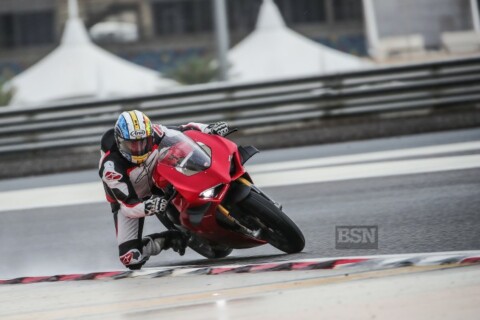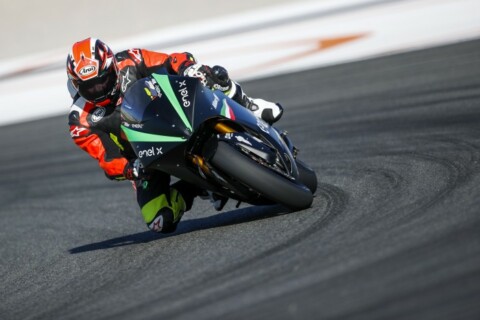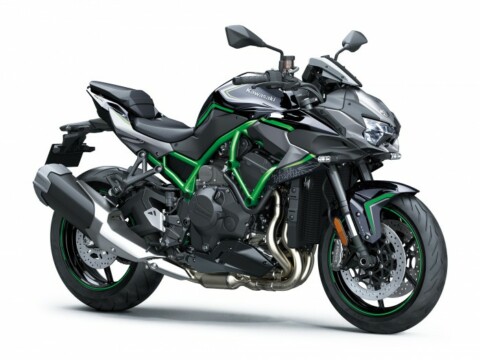One of the great things about riding sportsbikes on circuit is it’s all in your head. Until you get to racing levels, it’s not about how old you are, how fit you are, or even what gender you are.
I’ll give you one of my favourite examples: I was at Cartagena and was introduced to the three people I was giving instruction to that day. An early 30-year-old, tall, polite guy in good physical condition (we have since become good friends). He then introduced me to his buddy who he said was a K1 kick-boxer. I guess the kick-boxer was late 20s, shaved head, tattoos and not an ounce of fat on him. He was quietly spoken and quick to smile. The third guy was on his own, nice bloke, mid-60s, with a paunch and handshake that belied office work.
All said they had not ridden on circuit before, but had ridden on the road. You can guess what my preconceptions were. I will try not to make that mistake again. As I said, it’s all in your head. The older guy soaked up what I told him and was prepared to trust what I showed him without hesitation, getting off the brakes and following me into the turns. The younger, fitter guys weren’t prepared to do this. They would not relax and trust their bike and tyres. I can’t remember the lap times exactly, but by the end of the day the older bloke was ten seconds seconds a lap faster that the others, and doing it smoothly, accurately, and safely.
I believe a part of our sport is about calculated risk. No matter what your maximum speed is, when you get there it feels like if you go any faster, or lean any further, you will crash. Everyone gets to that place, and to go faster you have to decide, or be told, where exactly you can push to drop more time. Once you decide where that time is, you need to be able to make yourself take a small step at a time into the unknown and see what happens.
It’s almost like you have to be prepared to crash to make that next step and hopefully find out that you were nowhere near crashing. From then on, that will be your new limit. The trick is knowing the places you are already near the limit and where your slow sections are.
A rider I worked with lot with in 2012 reached his personal limit at an incredibly slow speed. I even joked with him that my mum would pass him around the outside. After a lot of practice and instruction over 12 months, he literally went from ‘slow in the slow group’, to ‘fast in the fast group’. To me he proved that the ‘calculated risk’ thing, even if you don’t have it at first, can be learned.
I’ve also worked with riders at the other extreme who push hard to go fast but in many of the wrong places, taking big risks to achieve their laptimes. I stop them immediately to explain that unless we go all the way back to basics and start again, there’s going to be a crash. It may take half a day for them to understand the different way of riding, but because they are not afraid to have a go they figure it out. Even if they don’t beat their personal best by the end of that first day, their new style of riding is not limited to the speed they were going before, and they do these times easier and more safely.
Another thing that I see as an important part of learning to go fast is to being able to memorise a circuit. Some do it quicker than others, which is no problem as long as you can do it. If you are not lost on track, you can replicate brake markers, turn in points, speed sensations and gear positions. I show many riders how to ride a circuit faster and safer, explaining why it works and why it will work on other circuits, but if they can’t replicate what they are doing each lap, or at least remember exactly where they are on track and what they are trying to replicate, it will never feel or look safe. This is something that’s not easily taught. People seem to have this or they don’t.
I have instructed many female riders. They seem to have less ego about getting instruction and are keen to listen and learn. Recently at Valencia I instructed a woman that was on her second or third circuit event. Within a few laps behind me we were carving through literally half of the riders in her group because she was prepared to trust me and she was not lost on circuit. She knew exactly where she was and could replicate what we did lap after lap.
This really is the difference between doing it with risk, or safely. I believe that if you can memorise a circuit and understand exactly where you are on it, your age, fitness, and/or gender will not stop you from being a ‘fast group’ track-day rider’. Like anything, it’s just a matter of committing to it, and getting enough quality practice.
Crafar is a legend, 500GP race winner and the brains behind Motovudu, the complete riding experience. Click here to find out more










